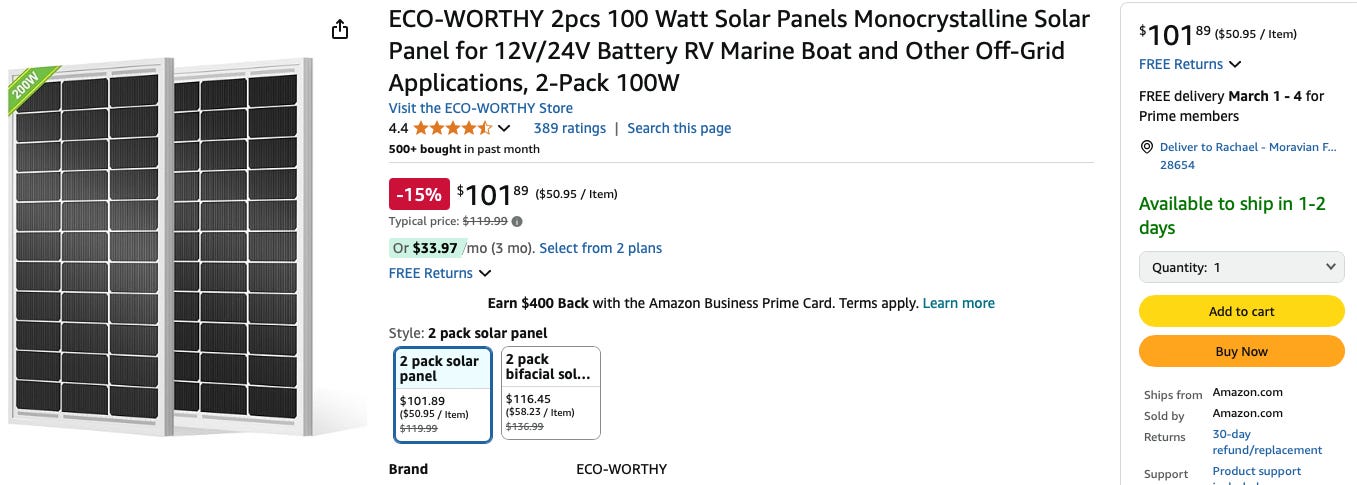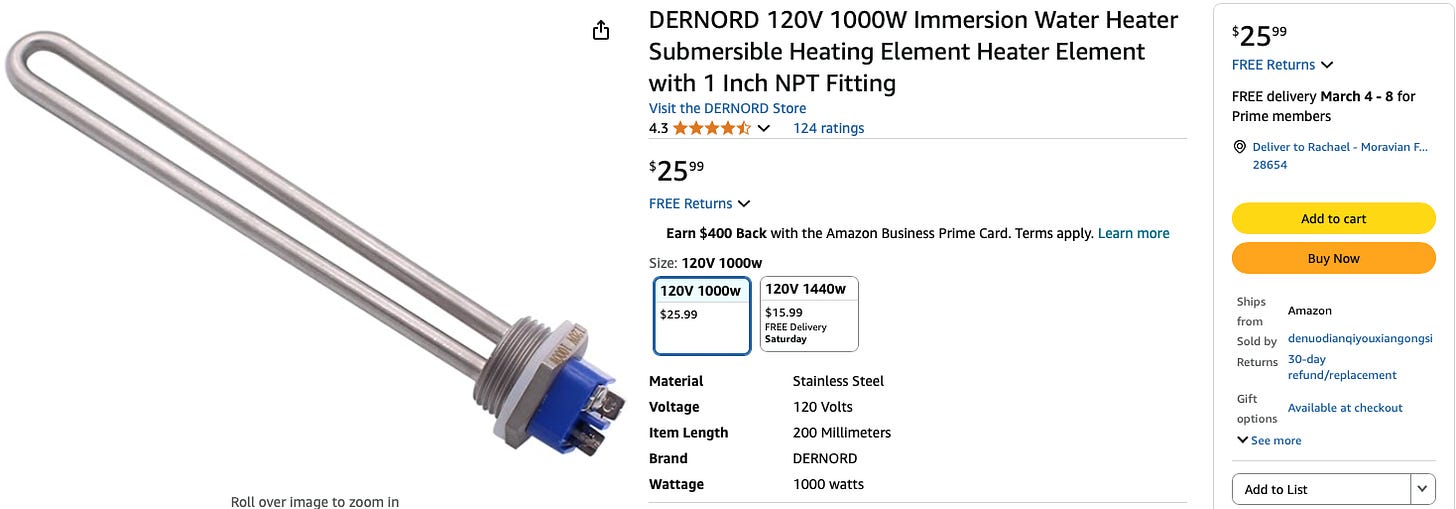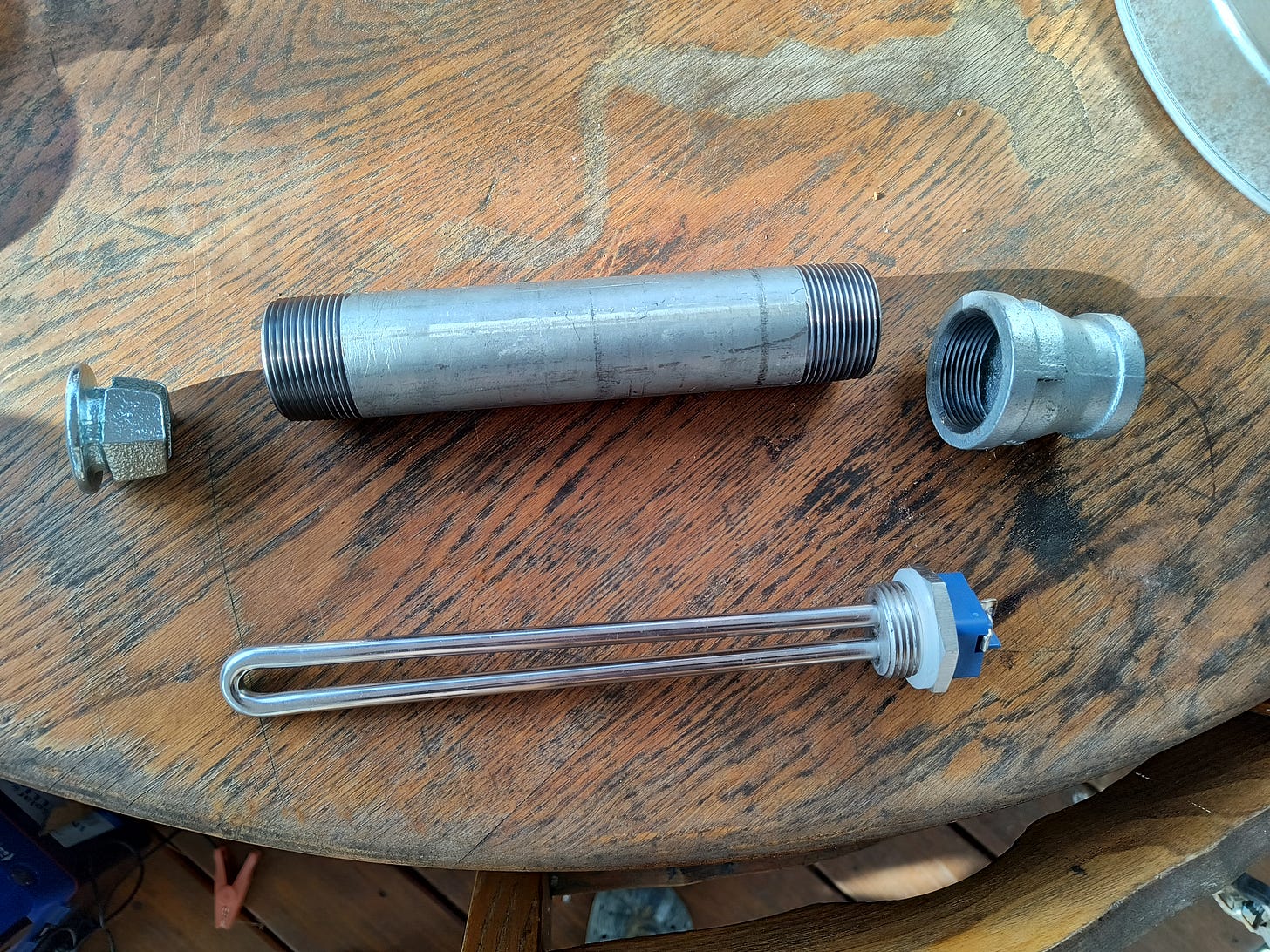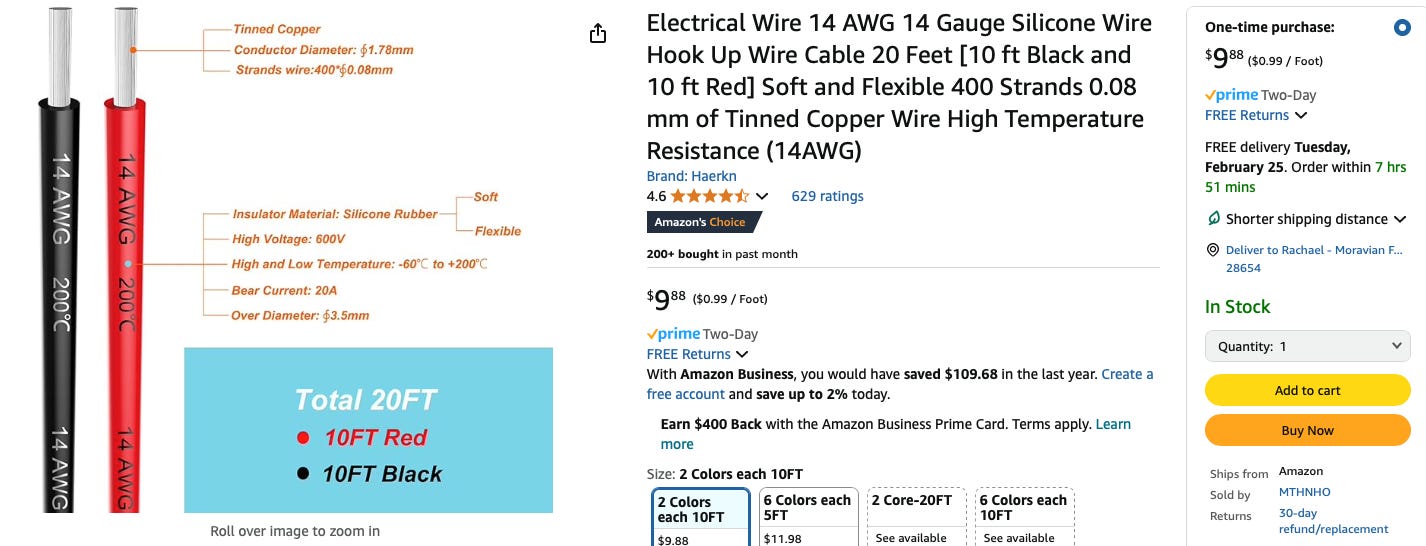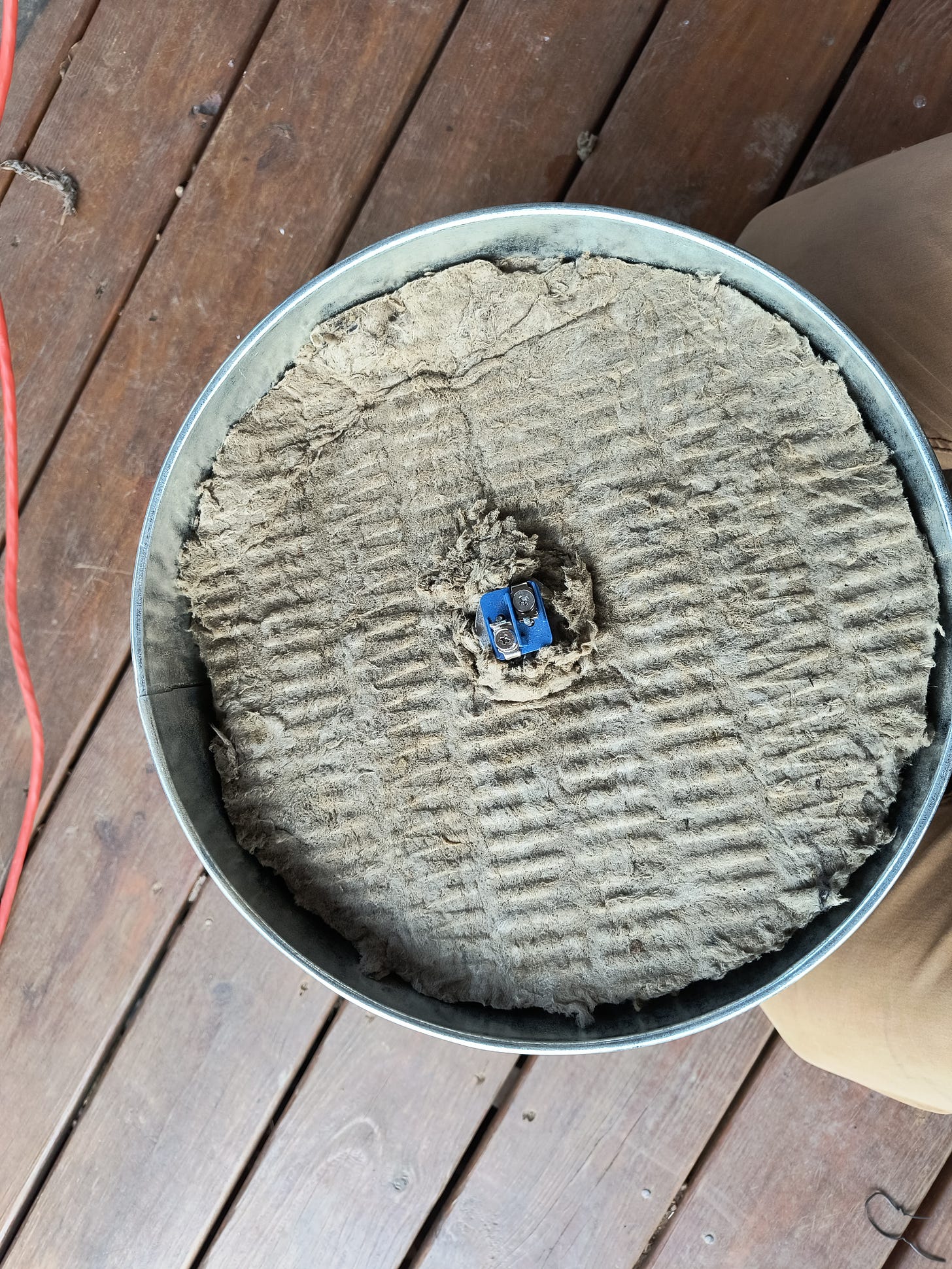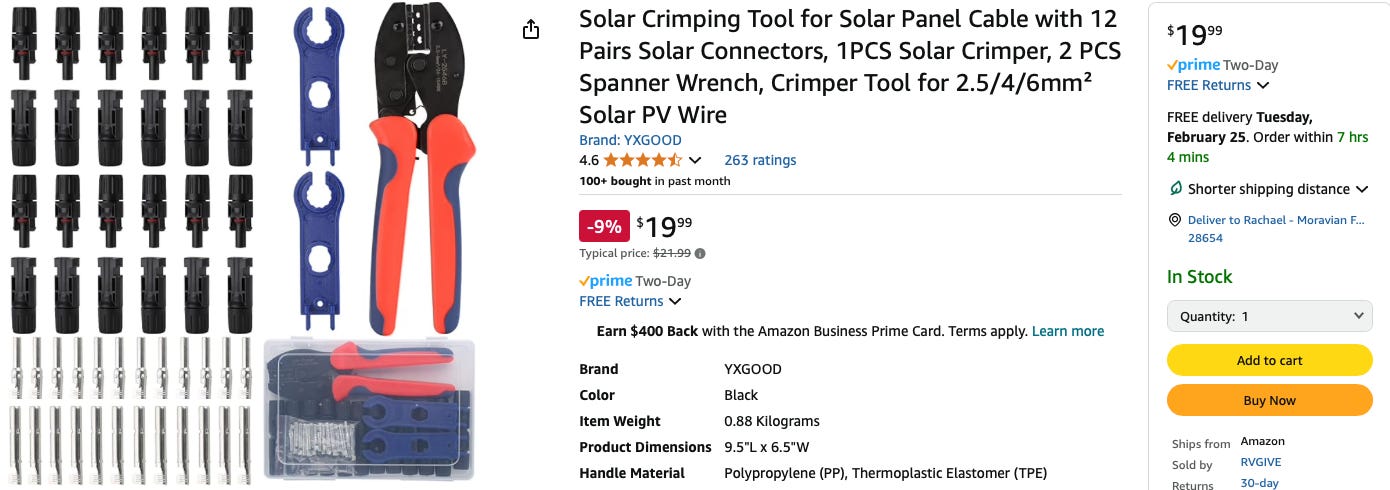Solar powered thermal mass heater for thawing out livestock water tanks
A half-baked new invention
As the cold weather hits it can be a challenge to keep your animals supplied with nonfrozen drinking water when troughs ice over.
I personally have tried a number of methods to combat this challenge that could all be described as ‘cockamamie.’
Case-in-point, here I’m ratchet-strapping my beer brewing setup into the back of a Toyota so that I can drive around the farm and melt the animals’ water troughs with boiling water delivered from a brewing kettle set atop a propane burner. (You can’t tell from the photo and the sunny conditions are deceptive but when this picture was taken it was about 7 degrees Fahrenheit (-14 C).)
That was an enormous hassle.
So - no kidding - what we do now is to hook up a few hundred feet of hoses to the hot water tap on our washing machine to dispense hot water to melt the animal’s water tanks out in the various pastures.
[It’s not as bad as you think. We get all our heat and hot water during the cold season from a wood fired boiler. It’s fueled by firewood sustainably harvested on our land to supply the energy to make hot water and melt water tanks. It’s local and not environmentally harmful, but neither is it efficient from a time and labor perspective for this purpose.]
OK, so what then?
Have you ever run hoses all over the place to get your animals water? Have you tried to keep those hoses unblocked by ice during cold periods? Has that been a real pain-in-the-ass despite your efforts to drain hoses when you anticipate below freezing conditions are on the way?
If you are sufficiently frustrated then my idea here might start to look attractive…
What about a thermal mass battery that is off-grid powered by sunlight to provide minimal heat to melt ice so that your animals can get a drink of liquid water for at least a few hours per day during the cold season?
OK so here’s a first test of my invention melting ice (slightly faster under the ambient conditions shown) as proof-of-concept:
I don’t have a more dramatic test result to show at the moment because since I designed and assembled this system we haven’t had bad enough weather to give it a more rigorous test. And TBH I’m not out here wishing for worse weather…
So this is a work in progress. The principles are sound but YMMV.
Here’s all there is to it:
A DC electrical system run off of inexpensive solar panels, e.g. this 100W x 2 set:
A common water heating element such as this
The water heating element is encapsulated using common threaded metal pipe fittings for example:
Then the heating element assembly is embedded within a thermal mass of sand, e.g. in a ~6 gal bucket as shown
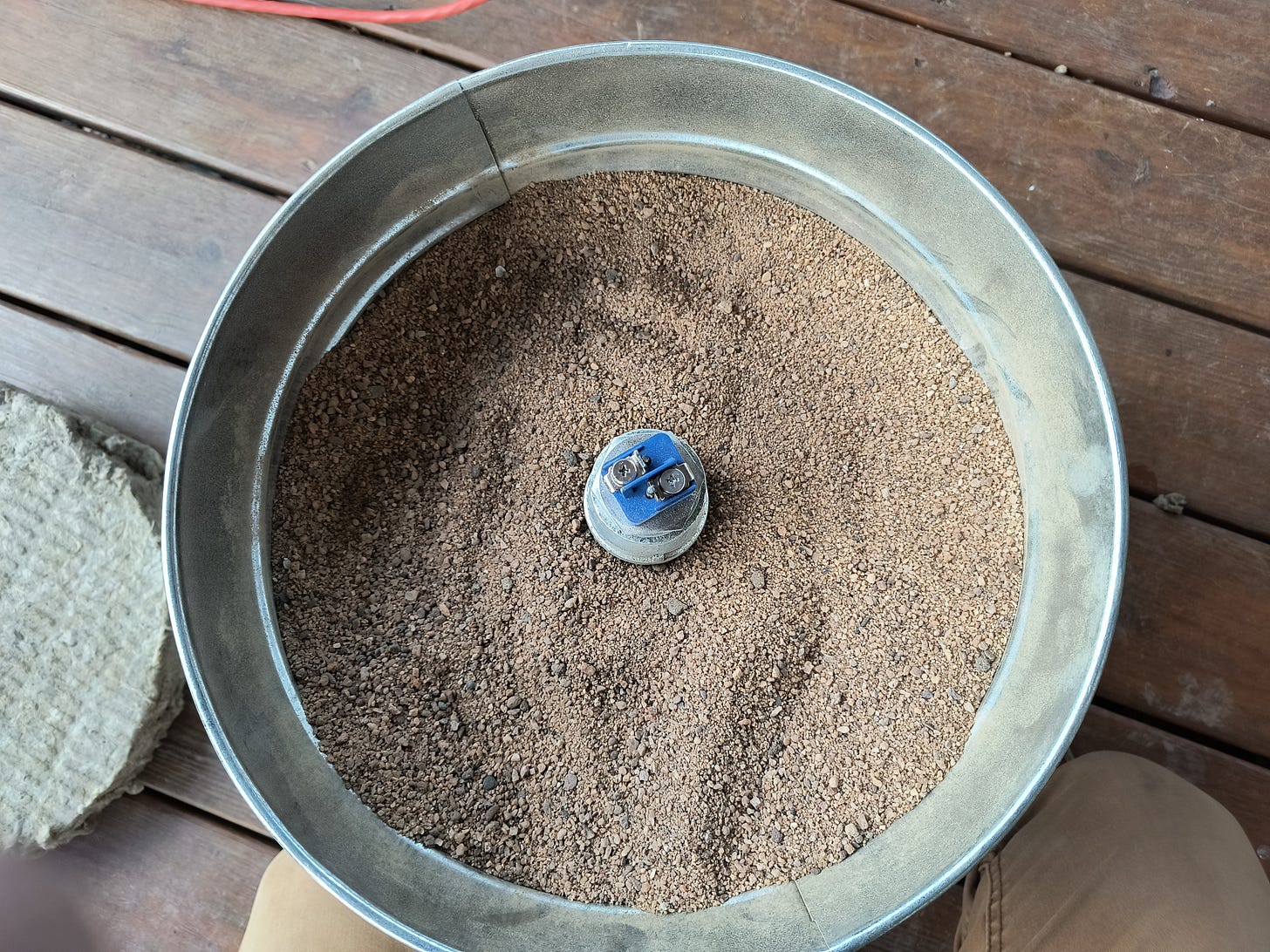
Electrical connections are made using high temperature silicone wire like this…
…and covered by high temperature rock wool insulation like this
Common solar wiring connectors are used for making the connections, such as
The idea is that the solar panels heat the sand “battery” (i.e., thermal mass) which melts the ice and retains heat for a period of time so the animals can get a drink of liquid water for a few hours during the late day/evening. It will probly re-freeze overnight, but then re-melt late the next day once enough solar energy has re-accumulated in the sand battery again. And so on.
You might have to play around with the ratio of solar panel capacity to sand battery mass and water tank volume to suit your local weather conditions. I’m going to keep messing with these ratios to improve next versions of the setup.
Will it work when the sky is overcast or during a snowstorm? Um, probly no.
If you have a very cold day that is clear and sunny then the system will work provided you have enough power coming in from the solar panels. My little test here in western NC during February used two cheapo 100W panels. If you are in a colder climate it would likely take more Watts (i.e., bigger and better PV panels).
You will probly have to experiment with what works in your situation. If your winter climate is both very cold and very overcast this probably won’t work for you. But if you have periods of sunny-but-cold days like we do in NC this could be a solution that saves you some headache keeping a supply of liquid water available to your animals for a least several hours per day during a subfreezing episode.



